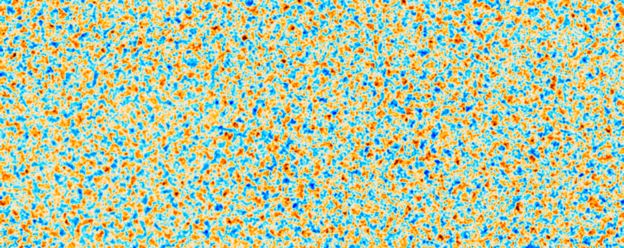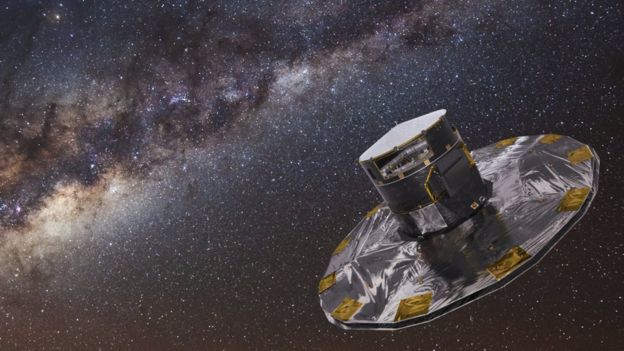Another telescope has entered the debate about the age and expansion rate of the Universe.
Source: BBC News
This topic has recently become the subject of an energetic to and fro among scientists using different astronomical facilities and techniques.
The new entrant is the Atacama Cosmology Telescope in Chile.
It’s been studying the “oldest light” on the sky and has concluded the Big Bang occurred 13.77 billion years ago, give or take 40 million years.
That’s almost exactly the same number we got from Europe’s flagship Planck space observatory mission, which mapped the ancient light in the early 2010s.
But therein lies the problem because other telescopes using different methods have come out with ages that are a few hundred million years younger.
What they’ve all been trying to do is measure what’s known as the Hubble Constant – the value used by astronomers to describe cosmic expansion.
The further away you look, the faster galaxies are receding from us. Ever since the American astronomer Edwin Hubble first detailed this relationship in 1929, researchers have meticulously tried to put a number on it.
There are two leading approaches. One is to map the distance to local variable (cepheids) and exploding (supernovas) stars and try to gauge the recession rate from their movement. The other is to look at the state of the cosmos shortly after the Big Bang and to use what we know about the physics at work at this early time to predict what the constant should be.

Planck, and now the ACT, pursued this latter concept. To do it, they’ve both surveyed the Cosmic Microwave Background.
The CMB was the first light to sweep out across space once the Universe had cooled sufficiently to permit the formation of neutral hydrogen atoms – about 380,000 years into the life of the cosmos.
The light still bathes the Earth in a near-uniform glow at microwave frequencies, and has a temperature profile that is just 2.7 degrees above absolute zero.
But it’s possible to detect minute deviations in this signal – and in the way the light has become twisted, or polarised, as it’s come towards us – to pull out a welter of information. One of these nuggets of information is that value for the Hubble Constant.
The international team behind the ACT published its figure on Wednesday in a paper on the arXiv pre-print server (not full peer review).
This number is 67.6 kilometres per second per megaparsec – a megaparsec being 3.26 million light-years.
To put it another way – the expansion of the Universe increases by 67.6km per second for every 3.26 million light-years we look further out into space. Planck’s version of this number was 67.5.
Should we be surprised? Shouldn’t similar approaches yield very similar results?
ACT collaborator Prof Erminia Calabrese, from Cardiff University, UK, says that’s true on one level but argues the experiments were sufficiently different to throw up any contradictions.
“If you understand how to build experiments, and if you understand what you’re modelling in terms of physics – yes, you’re right, it’s perhaps no big surprise that you find the same thing. But these experiments were different,” she told BBC News.
“Planck went to space, we stayed on the ground; and when you stay on the ground and have higher precision, you observe smaller angular scales, and these don’t necessarily need to behave in the same way. There could have been a process or a mechanism that gives you different physics on different scales. That could have been an outcome.”

For comparison, telescopes that have used the alternative approach produce a Hubble Constant that is around 74km per per second per megaparsec.
This other camp includes the mighty Hubble Space Telescope itself and the Gaia space observatory, which is mapping the positions of nearby stars with a precision that’s unprecedented in the history of astronomy.
Both groups have now hammered down the uncertainties in their respective measurements that the gap between them has become unbridgeable. One or both is wrong somewhere, or perhaps there is some new physics out there that neither side has grasped.
“It’s possible that there are still some small biases in either the CMB or supernova datasets (or both) that are not being accounted for completely. But as the observations improve, it’s becoming more difficult to see what that could be,” commented Prof Isobel Hook from Lancaster University, UK.
“The alternative is that there’s something fundamental about the Universe that we’re not understanding.
“There are several theories that try to explain the discrepancy – one idea is that some extra early expansion in the Universe makes the CMB ‘yardstick’ a different physical size than what’s assumed. But there are problems with these theories, too. I honestly don’t know which side I’m on, but it’s a fascinating debate!” she told BBC News.
Source: BBC News

































Leave a Comment
You must be logged in to post a comment.